Core exercises for stroke patients help improve stability throughout the body, which helps improve balance and gait (your manner of walking). Building core strength and coordination through trunk control exercises can also help reduce your risk of falling and prevent injury after a stroke.
It’s important to find core exercises that are safe and suitable for your level of ability. To help you get started, we’ve compiled a list of the most effective core exercises for stroke patients. Before diving in, let’s explore why core strength matters during stroke recovery and the importance of exercising consistently at home.
Why Core Strength Matters During Stroke Recovery
Core exercises are essential for improving balance and stability throughout the body. This allows us to not only stay balanced while we sit or stand, but also to maintain balanced while we walk. To understand how this works, let’s look at how a stroke impacts movement in the body.
Each hemisphere of the brain controls movement on the opposite side of the body. When a stroke damages the areas that control movement, it can result in motor difficulties on the right or left side of the body, a condition known as hemiparesis, which affects 80% of stroke survivors.
When one side of the body is impaired, but the other side is not, it can create difficulty with balance and even impair your gait. Fortunately, stroke rehabilitation exercises can help rebuild strength and coordination throughout the body, including the core, via neuroplasticity.
Neuroplasticity refers to the brain’s ability to rewire itself and heal after an injury like a stroke. As neural connections are created and strengthened, it improves communication between the brain and the affected muscles, leading to better trunk control, dynamic balance, standing balance, posture, and gait.
To activate neuroplasticity, it’s essential to practice high repetition of core rehab exercises. The more a movement is practiced, the more the brain will reinforce the neural connections for that movement. This is how core stability is restored after a stroke.
Video: Core Exercises for Stroke Patients with PT Cassie
Before we get started, here’s a video from Flint Rehab that walks you through some beginner-level core exercises for stroke patients. If you have limited mobility, this is a great starting place; and if you have a high level of existing mobility, you can use this video as a warm up.
Following along to a rehabilitation exercise video can be helpful to stay focused, but some may want written versions of the exercises, which we’ve included below.
Effective Core Exercises for Stroke Patients
To help you rebuild core strength and coordination after stroke, we’ve gathered 15 effective core exercises that you can do at home. It’s important to work closely with your therapist to adjust these stroke exercises to your level of ability and make sure they are safe for you.
Here are 15 effective core exercises for stroke patients:
1. Trunk Rotation (Twists)
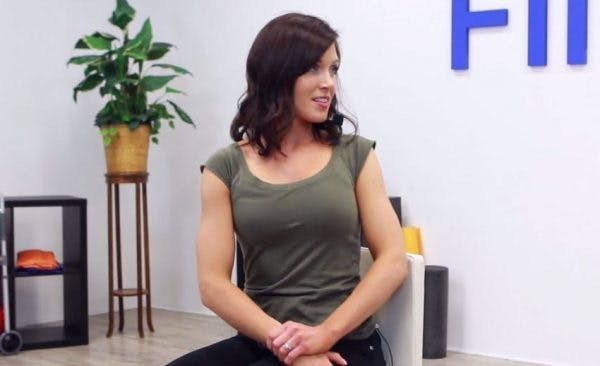
For this core exercise, begin by placing your right hand on the outside of your left thigh. With your back straight, use your arm to help twist your torso to the left. You can use your unaffected hand for assistance. Be sure to keep your spine straight and stop twisting if you feel any pain. Then, return to the initial position and complete this trunk rotation 15 times.
2. Lateral Trunk Flexion (Oblique Crunches)
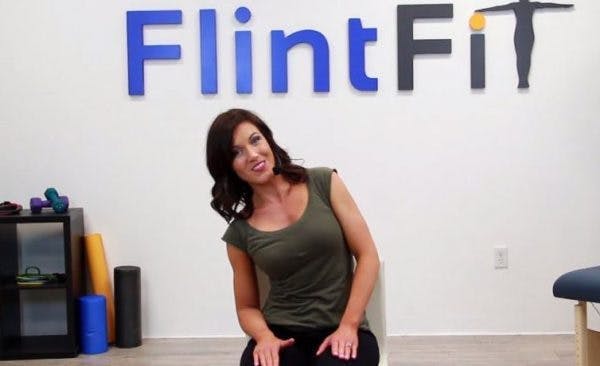
Begin this trunk control exercise in a seated position. Dip your left shoulder down towards your left hip and then return to an upright position by focusing on using your core to pull yourself up. You can use your arm to help you get back up. Repeat this seated core exercise on each side 15 times.
3. Forward Punches
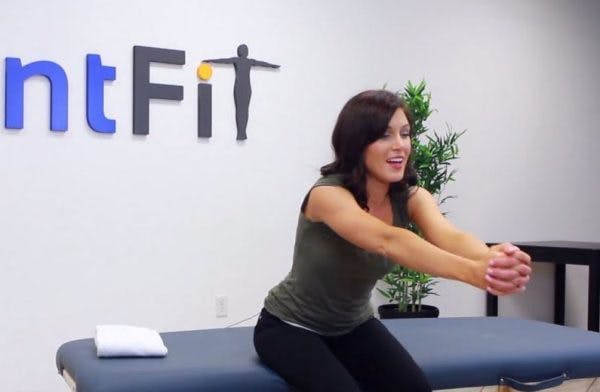
In a seated position, clasp your hands together and then punch forward. Use your trunk to lean forward while keeping your arms parallel to the floor. Go as far forward as you can safely without falling. Then, use your back muscles to come back up. Repeat 10 times. Although you may feel pressure in your core, if you feel any pain in your back, stop immediately.
4. Lateral Punches
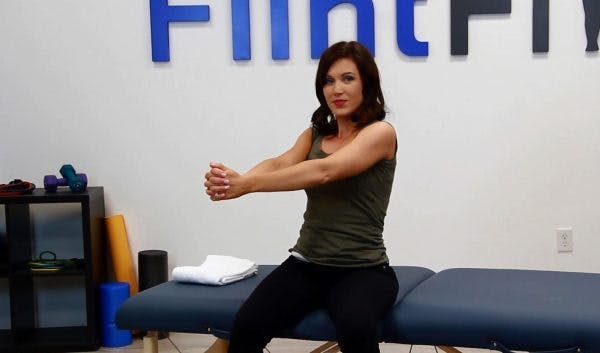
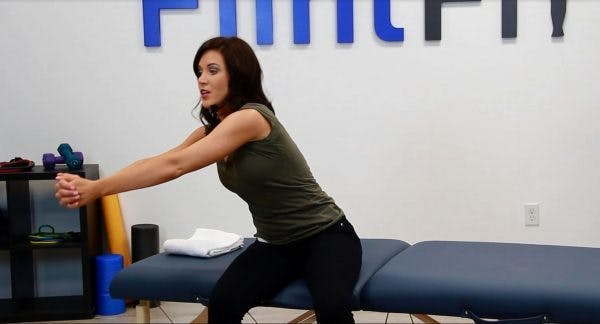
Remaining in a seated position, interlace your fingers and extend your arms in front of you with your elbows straight. Then, lean to the right and “punch” the air. Return to center and repeat for a total of 15 repetitions.
5. Back Extensor Isometric Hold
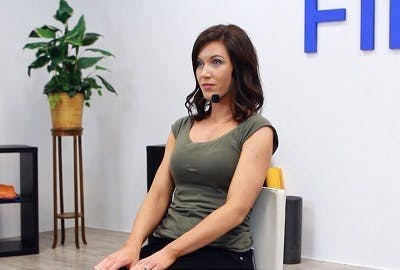
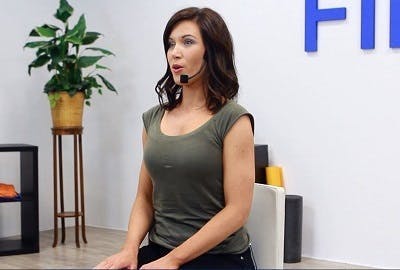
Sit at the edge of a seat and lean back against the chair. Hold this position for a few seconds or as long as you can. Then, use your core muscles to sit up straight and return to your seated position.
6. Seated Marches
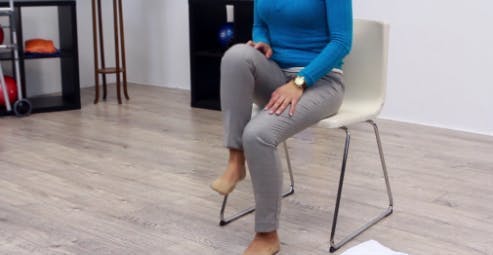
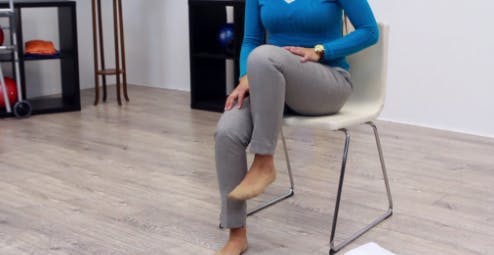
Similar to the core exercise above, begin this exercise by sitting on the edge of a seat. Then, alternate lifting each leg and bringing the knees up. For an added challenge, stand holding onto the back of your chair and complete marches in place.
7. Seated Trunk Extension
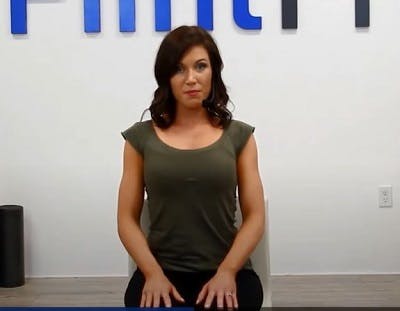
Keep your back straight while sitting at the edge of your seat. Slowly, lean forward without falling over. Then, engage your core muscles to lean back until you tap the back of your seat. You may use your arms for an added boost. Hold for about 5 seconds, or as long as you can, and then return to an upright position. Repeat 15 times.
8. Leg Rotations
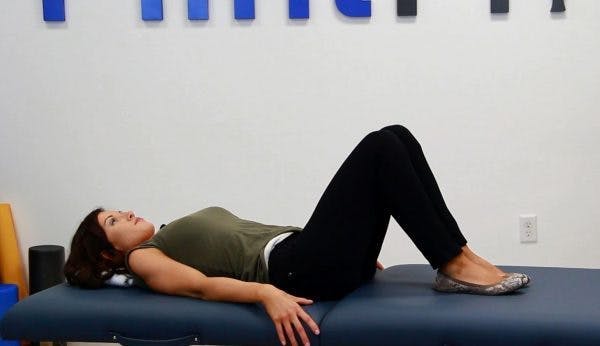
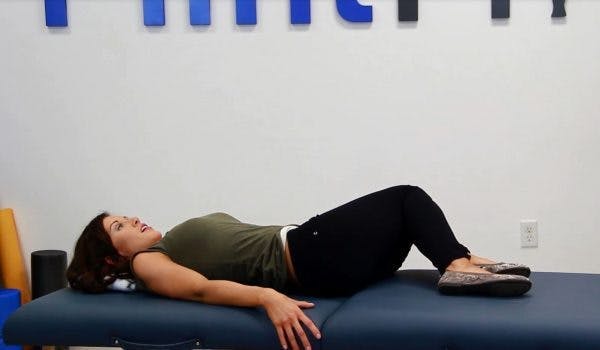
For this core exercise, lie down on a mat with your knees bent at 90 degrees and feet flat on the floor. With control, let your knees fall to the right and gently rotate your truck to help lower your legs. Then lift your knees back up to the starting position and repeat on the other side. Complete 15 repetitions.
Throughout this exercise, focus on engaging your core and keep your low back flat against the floor the entire time. As soon as you feel your low back beginning to lift off the floor, stop rotating and return to the starting position.
9. Leg Raises
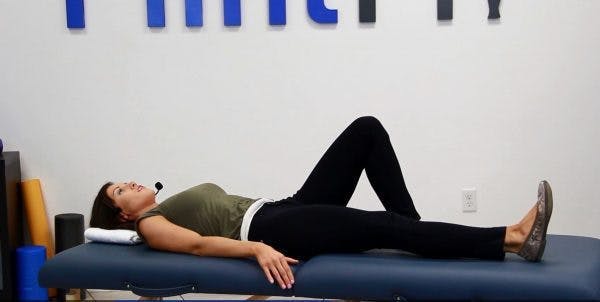
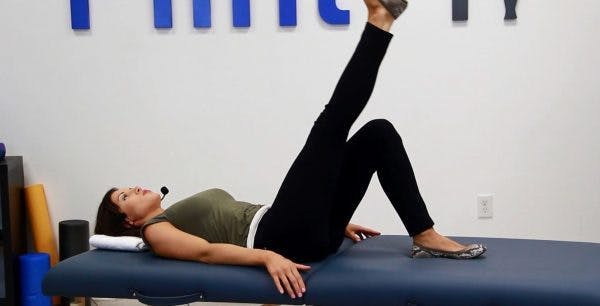
Similar to the leg rotation exercise, lie on your mat with your knees bent at 90 degrees and feet flat on the floor. Extend your affected leg until your knee is straight. Then, lift your leg as far as you can safely, and bring it back down. Repeat 10 times on each side.
Advanced Core Exercises for Stroke Patients
The following exercises are advanced moves that should only be attempted once you have regained enough strength and coordination in your core. Ask your therapist if they are suitable for you, along with any extra tips for modification.
10. Bridges
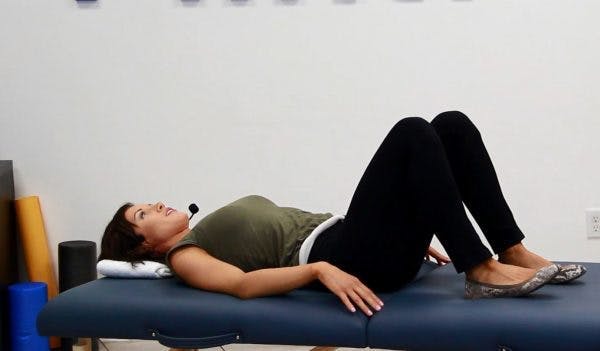
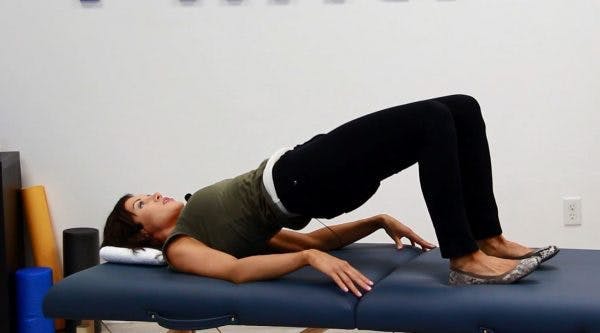
For this trunk control exercise, lie on your back with both knees bent at a 90-degree angle. Use your core to scoop your glutes up, making sure not to sway to either side. Then, release your body back down and repeat 10 times. This exercise targets the core, glutes, and hamstrings to improve strength and stability throughout the body.
11. Crossbody leg lift
To perform this advanced core exercise, lie on the floor with your arms and legs flat. Then, lift your left foot and tap it with your right hand. Alternate with your right leg and left arm and repeat. If it is too challenging at first, you can lift and tap your elbow to the opposite knee.
12. Crunches
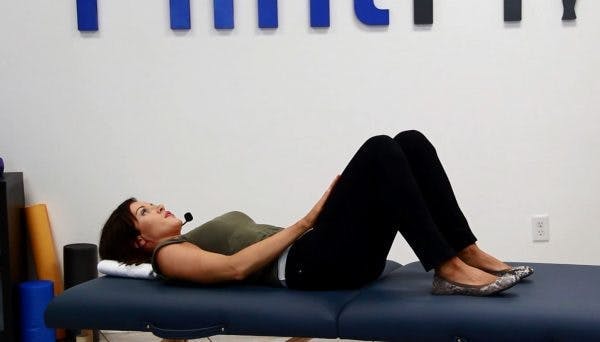
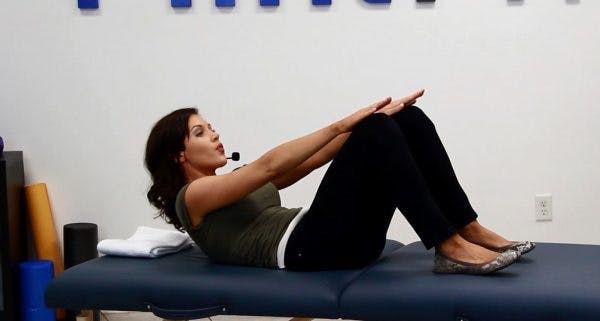
Crunches are classic and challenging core exercises for stroke patients. While lying on your back with your knees bent at a 90-degree angle, place your hands on your thighs. Then, lift your core and slide your hands up to your knees, or as high as you can safely go. Then, release back down. Complete 30 crunches.
While performing this exercise, it’s important not to pull on your head or strain your neck. As soon as you feel pain, stop immediately. Instead, lift as high up as you can go using your core muscles, and then release back down.
13. Toe Taps
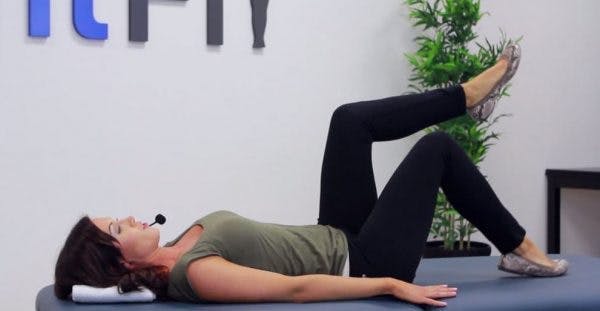
While lying on your mat, assume a tabletop position by lifting your legs with your knees at a 90-degree angle. Your shins should be parallel to the floor and your core should be fully engaged. Then, from this position, bring one leg down and gently tap the floor with your foot.
Bring your leg back up by using your core muscles, keeping your knee bent at a 90-degree angle throughout the exercise. Alternate with the other leg, all while keeping your core as engaged as possible. Repeat this core exercise 15 times.
14. Kneeling planks
To perform kneeling planks, start in a tabletop position on the floor. Then, move your knees back until your body forms a straight line from your head to your knees. Hold for 20 seconds or longer if you want more of a challenge. For less challenge, you can move down to your forearms.
15. Knee to Chest
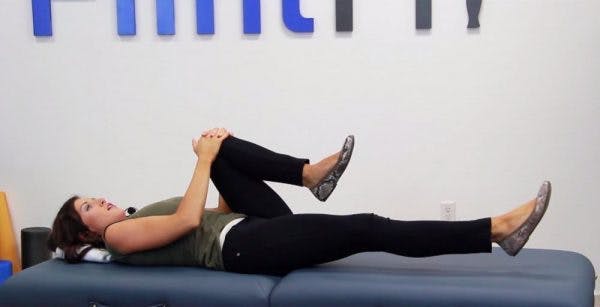
This core exercise may be more challenging than others. Be sure to try it only if you’ve been cleared by your therapist. To perform this exercise, sit or lay in a comfortable position on your back. Then, hug your knees into your chest. Hold onto your left leg with your left arm and then extend your right leg onto the floor. This will be your starting position.
From your starting position, bring your right leg back into your chest. Try not to use your leg muscles to achieve this movement. Focus specifically on engaging your core and using your core muscles to lift your leg. Once your leg is back in your chest, repeat with the other leg, alternating on each side a total of 10 times.
Core exercises for stroke patients may vary in difficulty level. While they can all be beneficial, it’s important to find the appropriate trunk control exercises for your ability level. The goal of rehabilitation exercise is to feel challenged but not frustrated.
If these advanced core exercises are too hard, continue with the other exercises until you build up enough strength and coordination. While difficult exercises may seem better at first glance, you don’t want to injure yourself and, furthermore, what matters most is repetition and consistency.
Practicing Trunk Control Exercises at Home
The best way to see results from your core exercises is to practice on a consistent basis at home. This will provide your brain with the stimulation it needs to rewire itself and improve control over your affected muscles.
While the core exercises provided in this post are helpful, it can be hard to follow along to them on a daily basis. When consistent exercise is the key to recovery, it’s important to do something extra for yourself to stay motivated to exercise at home. This is where interactive neurorehabilitation devices like the FitMi from Flint Rehab can help. It takes classic rehabilitation exercises, much like the ones in this article, and turns them into an interactive experience.
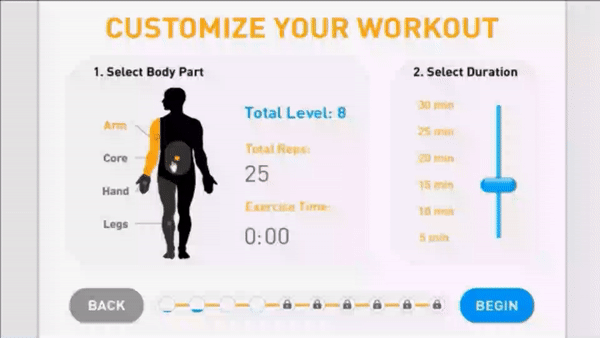
As you follow along to the exercises on the screen, FitMi provides real-time feedback and unlocks more challenging exercises as you improve. It also allows you to target specific muscle groups including the hand, arm, legs, and core.
Understanding Core Exercises for Stroke Patients
As previously mentioned, it can be challenging to stay motivated and practice core exercises at home after a stroke. Fortunately, with a combination of therapy resources, you can boost your motivation and achieve your goals more swiftly.
Core exercise are particularly helpful for improving balance and walking, two common challenges that many survivors face. You will see the best results by practicing your exercises with high repetition on a consistent basis.
We hope this article helped you understand the importance of retraining your core and provided plenty of places to start exercising.
The post Core Exercises for Stroke Patients: 15 Ways to Improve Trunk Control, Gait, & Balance appeared first on Flint Rehab.



